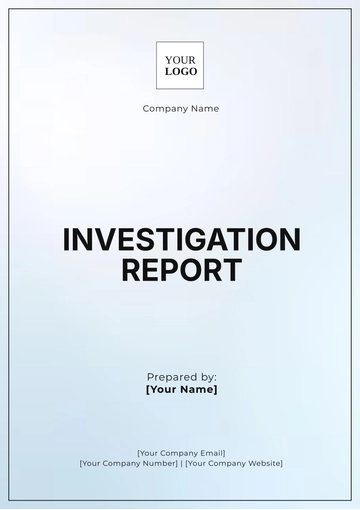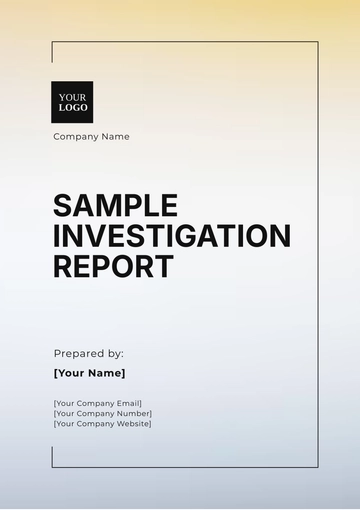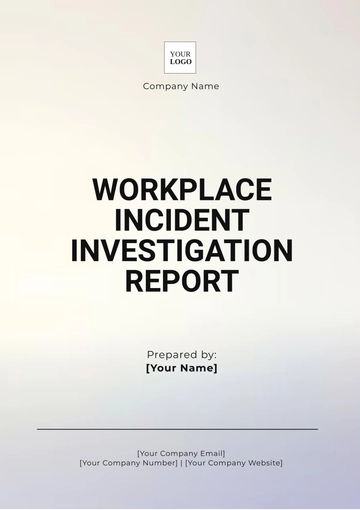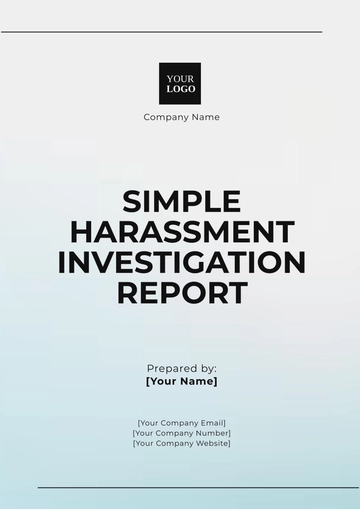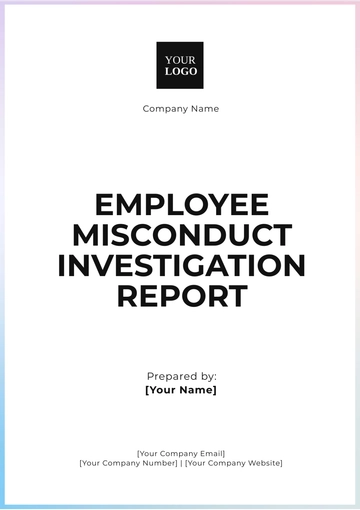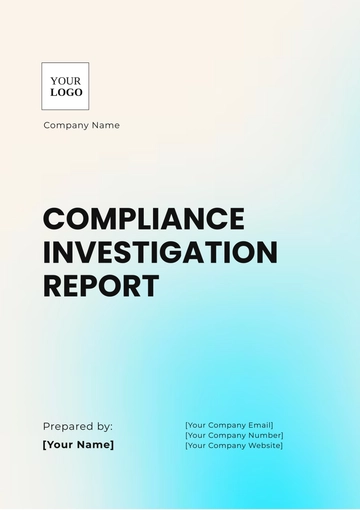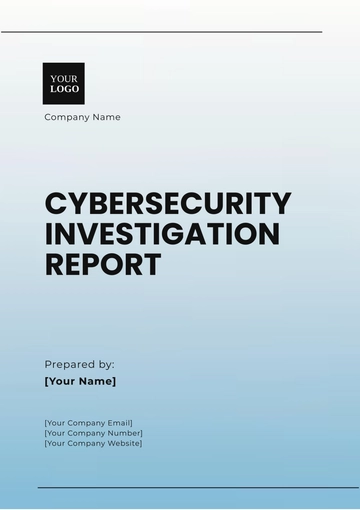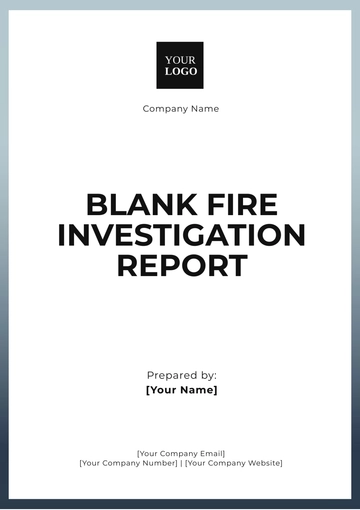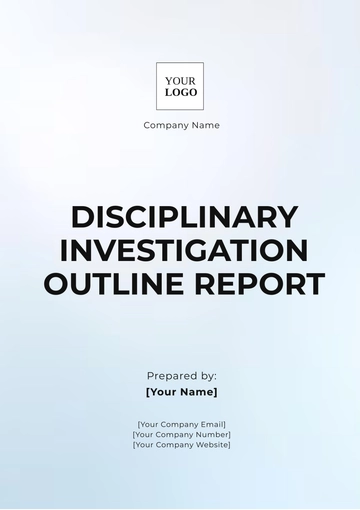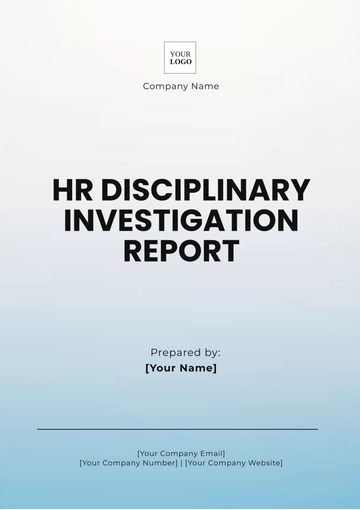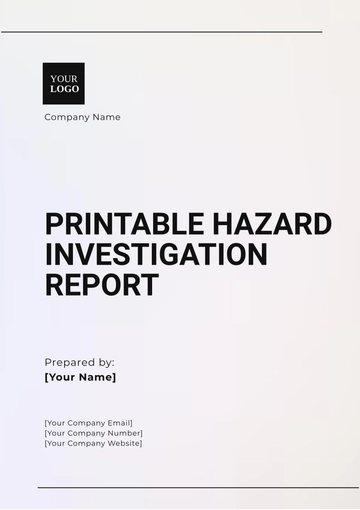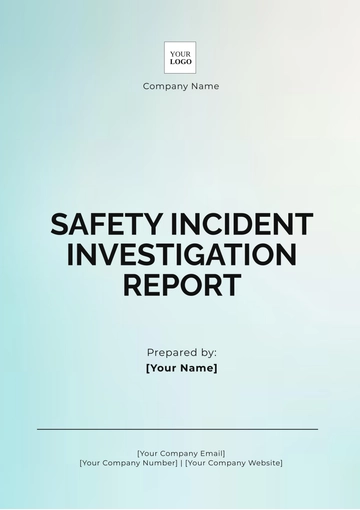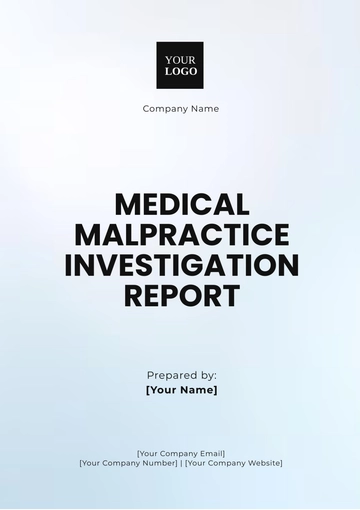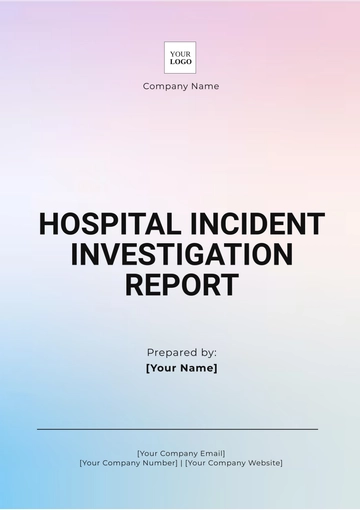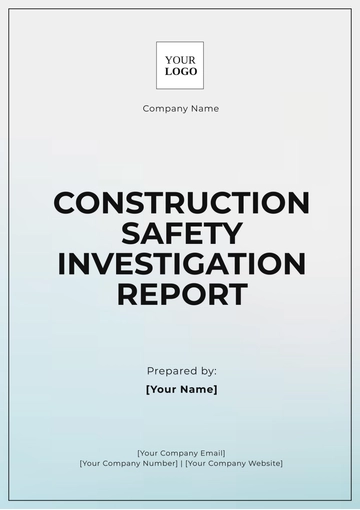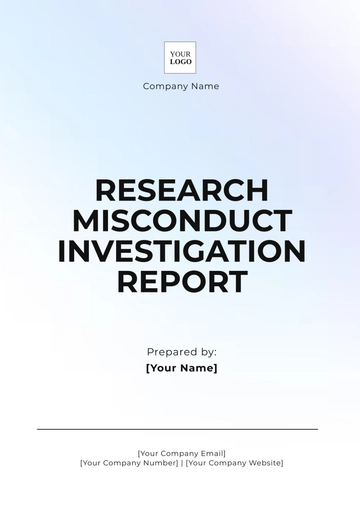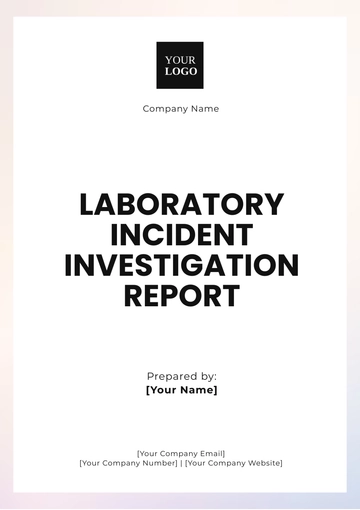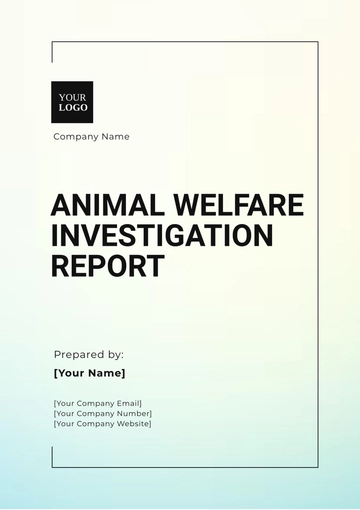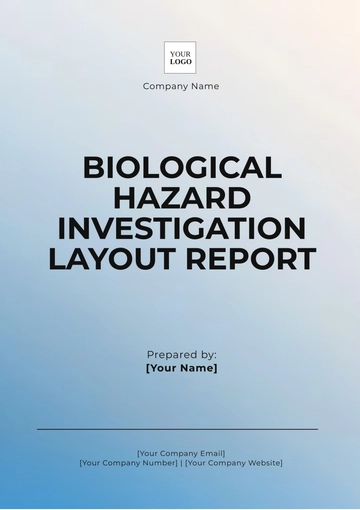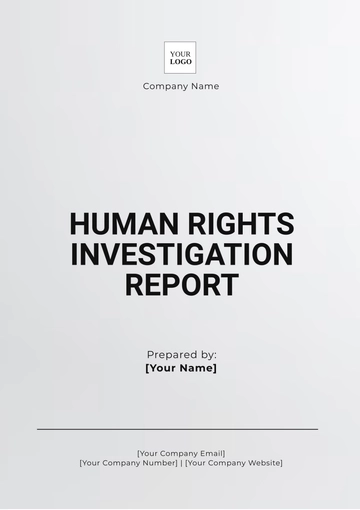Free Patient Safety Investigation Report
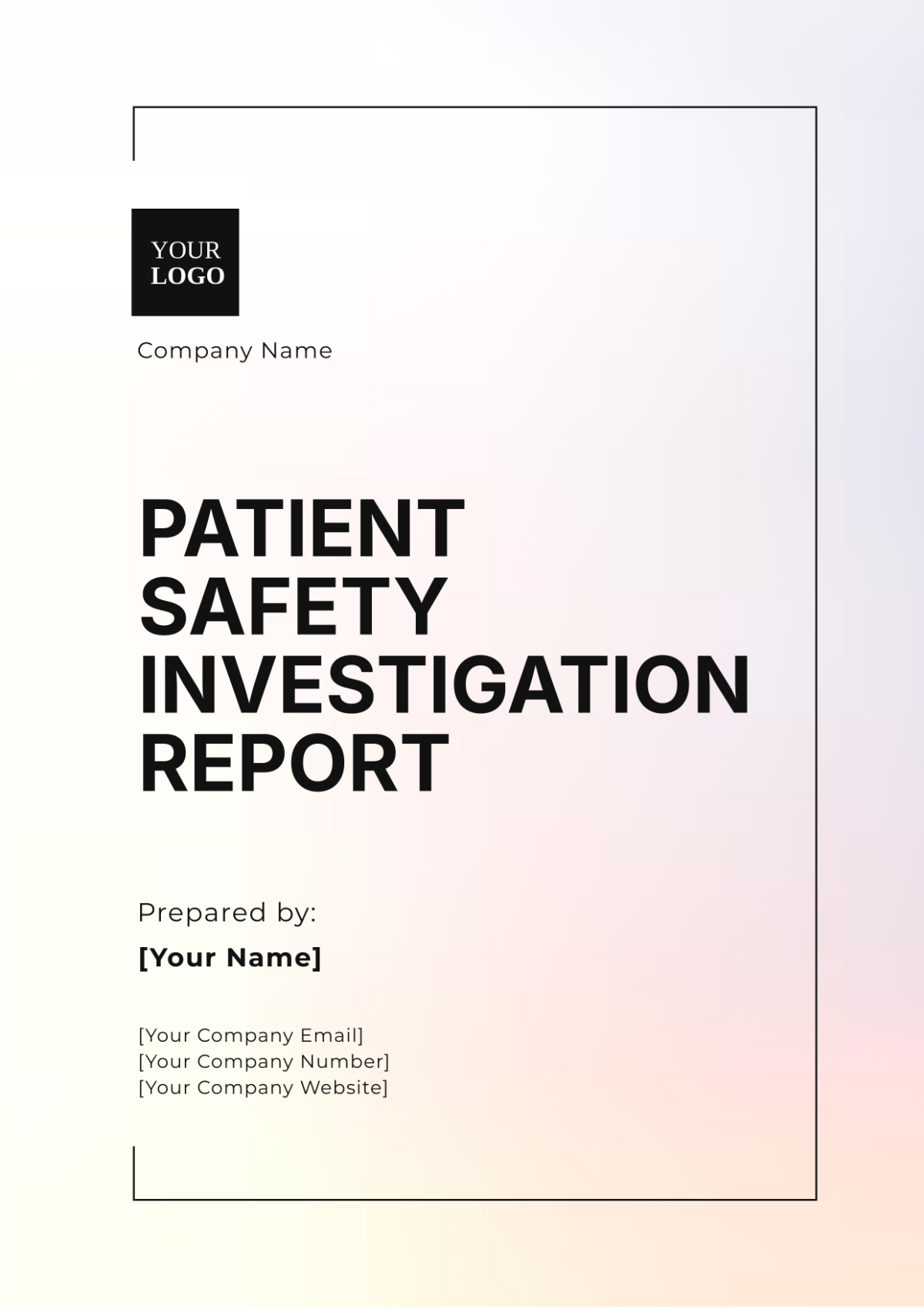
Prepared By: [Your Name]
Date: April 20, 2051
1. Introduction
Patient safety is a paramount concern in healthcare, where the goal is to provide safe and effective care. This report details the findings of an investigation into a recent patient safety incident at the facility. The purpose of the investigation is to identify the root causes of the incident, evaluate contributing factors, and recommend steps to prevent future occurrences.
2. Incident Overview
Date of Incident: April 15, 2051
Location: General Ward, Room 302
Patient Involved: Jane Doe
Staff Involved: Nurse Alice Johnson, Dr. Robert Smith
Brief Description of Incident:
On April 15, 2051, at approximately 10:15 AM, Jane Doe, a patient in Room 302 of the General Ward, experienced a fall while attempting to walk to the bathroom without assistance. Nurse Alice Johnson responded immediately, providing first aid, and Dr. Robert Smith was called to assess the patient. Minor bruising was observed, but no significant injuries were reported. The patient was stabilized and closely monitored for any delayed symptoms.
3. Investigation Process
3.1 Investigation Team
Lead Investigator: [Your Name], Risk Management Officer
Clinical Representative: Laura Miller, Nurse Supervisor
Quality Assurance Specialist: James Anderson, Safety Compliance Officer
3.2 Methods of Investigation
Data Collection: Medical records, patient reports, and incident logs were reviewed, along with surveillance footage from the hallway outside the patient's room.
Interviews: Key staff involved in the incident, including the attending nurse, physician, and patient, were interviewed to gather detailed accounts of the events leading to the incident.
Root Cause Analysis (RCA): A comprehensive RCA was conducted to identify the contributing factors and underlying causes of the incident, focusing on system failures, human factors, and environmental conditions.
4. Findings
4.1 Chronology of Events
10:00 AM: Nurse Alice Johnson administered the patient’s morning medications and checked on Jane Doe, who expressed feeling drowsy but stable.
10:15 AM: Jane Doe attempted to get out of bed and walk to the bathroom without using the call button for assistance. The patient lost balance and fell, landing on her side.
10:16 AM: Nurse Johnson responded immediately and helped the patient back into bed. Dr. Smith arrived shortly after to assess the situation.
4.2 Contributing Factors
Human Factors: The patient was not reminded to request assistance before attempting to walk. The attending nurse had noted the patient's slight drowsiness but did not anticipate the patient’s need to move without support.
System Failures: There was no visible signage or communication with staff highlighting the patient's fall risk. The patient’s mobility assessment had not been updated since the previous evening, despite changes in medication that could have impacted their stability.
Environmental Factors: The floor around the bed had recently been cleaned and was still slightly wet, increasing the risk of slips. No caution signage was placed to indicate the wet floor.
4.3 Root Cause
The root cause of the fall was a combination of insufficient communication between staff and patient about fall risks, along with the lack of a clear system to update and highlight changes in patient mobility status. The slippery floor further contributed to the incident.
5. Impact of the Incident
5.1 Patient Outcome
The patient sustained minor bruising but did not require further treatment beyond first aid and observation. They were kept under monitoring for an additional 24 hours but showed no signs of further complications.
5.2 Organizational Impact
The incident exposed weaknesses in the facility’s patient safety protocols, particularly in the areas of communication and environmental management. It has prompted a review of procedures and the implementation of changes to minimize future risks.
6. Recommendations
Based on the findings of the investigation, the following recommendations are provided to improve patient safety and prevent similar incidents:
Strengthen Communication Protocols: Staff should consistently remind patients of safety measures, especially after administering medication that may affect mobility. An automatic reminder system should be implemented during rounds for high-risk patients.
Fall Risk Indicators: Install color-coded wristbands and bedside signage for patients identified as fall risks. Update patient status immediately following changes in medication or medical conditions that affect mobility.
Environmental Safety Enhancements: Review and modify cleaning protocols to ensure that wet areas are properly marked, and the drying time is sufficient before patient movement is allowed. Additional caution signage should be used for recently cleaned areas.
Routine Reassessment of Patient Mobility: Ensure that mobility assessments are updated regularly, particularly after medication administration or surgery. This should be integrated into daily nursing rounds to ensure up-to-date information is communicated among staff.
7. Action Plan
Action Item | Responsible Party | Timeline | Status |
|---|---|---|---|
Update communication protocols to include reminders for patients with mobility issues | Nursing Supervisor, Laura Miller | May 1, 2051 | In Progress |
Implement fall risk signage and wristbands for high-risk patients | Patient Safety Committee | May 15, 2051 | Planned |
Review and modify floor cleaning and safety procedures | Facilities Management | April 30, 2051 | Completed |
Add mobility reassessments to daily rounds | Nursing Department | Ongoing | Ongoing |
8. Conclusion
The patient safety investigation has identified key areas for improvement in communication, environmental safety, and risk assessment. By adopting the recommended strategies, the facility can enhance patient safety and reduce the likelihood of similar incidents in the future. These improvements will contribute to creating a safer, more responsive healthcare environment that prioritizes patient welfare.
- 100% Customizable, free editor
- Access 1 Million+ Templates, photo’s & graphics
- Download or share as a template
- Click and replace photos, graphics, text, backgrounds
- Resize, crop, AI write & more
- Access advanced editor
Enhance patient care with the Patient Safety Investigation Report Template from Template.net. This editable and customizable template offers a comprehensive structure for documenting safety incidents and investigations. Designed for clarity and efficiency, it allows healthcare professionals to tailor the content to fit specific situations, ensuring all critical details are captured. Create professional reports that promote accountability and improve patient safety standards with this essential reporting tool.
You may also like
- Sales Report
- Daily Report
- Project Report
- Business Report
- Weekly Report
- Incident Report
- Annual Report
- Report Layout
- Report Design
- Progress Report
- Marketing Report
- Company Report
- Monthly Report
- Audit Report
- Status Report
- School Report
- Reports Hr
- Management Report
- Project Status Report
- Handover Report
- Health And Safety Report
- Restaurant Report
- Construction Report
- Research Report
- Evaluation Report
- Investigation Report
- Employee Report
- Advertising Report
- Weekly Status Report
- Project Management Report
- Finance Report
- Service Report
- Technical Report
- Meeting Report
- Quarterly Report
- Inspection Report
- Medical Report
- Test Report
- Summary Report
- Inventory Report
- Valuation Report
- Operations Report
- Payroll Report
- Training Report
- Job Report
- Case Report
- Performance Report
- Board Report
- Internal Audit Report
- Student Report
- Monthly Management Report
- Small Business Report
- Accident Report
- Call Center Report
- Activity Report
- IT and Software Report
- Internship Report
- Visit Report
- Product Report
- Book Report
- Property Report
- Recruitment Report
- University Report
- Event Report
- SEO Report
- Conference Report
- Narrative Report
- Nursing Home Report
- Preschool Report
- Call Report
- Customer Report
- Employee Incident Report
- Accomplishment Report
- Social Media Report
- Work From Home Report
- Security Report
- Damage Report
- Quality Report
- Internal Report
- Nurse Report
- Real Estate Report
- Hotel Report
- Equipment Report
- Credit Report
- Field Report
- Non Profit Report
- Maintenance Report
- News Report
- Survey Report
- Executive Report
- Law Firm Report
- Advertising Agency Report
- Interior Design Report
- Travel Agency Report
- Stock Report
- Salon Report
- Bug Report
- Workplace Report
- Action Report
- Investor Report
- Cleaning Services Report
- Consulting Report
- Freelancer Report
- Site Visit Report
- Trip Report
- Classroom Observation Report
- Vehicle Report
- Final Report
- Software Report
